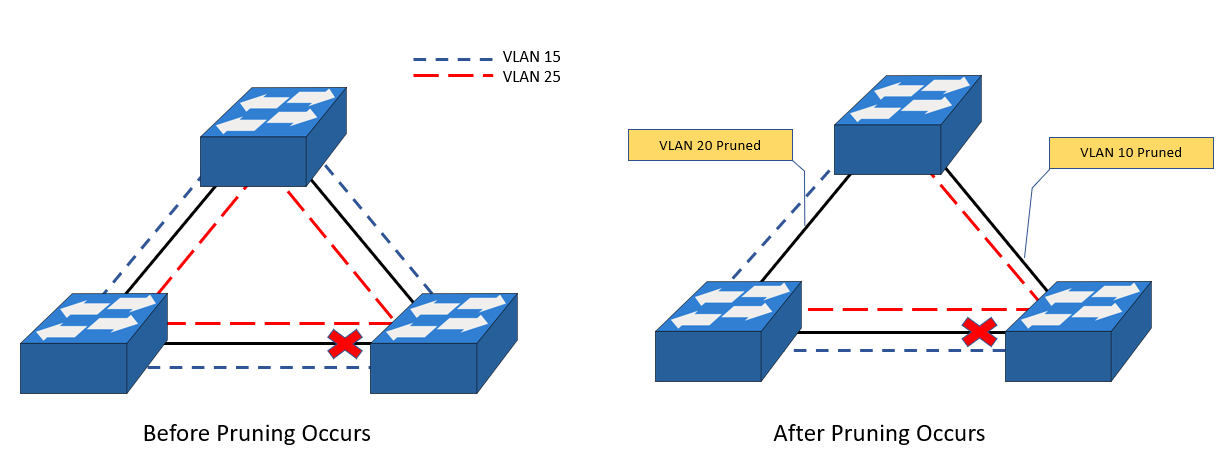We usually deal with two common misconfigurations in the Multiple Spanning Tree region. The Multiple Spanning Tree (MST) configuration issues are common in the following:
- Assignment of VLAN to the Internal Spanning Tree
- Trunk Link Pruning
VLAN Assignment to the Internal Spanning Tree
Bear in mind that the IST functions across all links in the MST region, wherein it does not consider the VLAN assigned to the physical port. It is possible that the internal spanning-tree instances may not consider the access layer and will unintentionally block a port.
Let us look at the diagram below having VLAN 15 assigned to the IST and VLAN 25 to MST1. Both SW1 and SW2 have two links between them, with VLAN 15 and VLAN 25 advertised for each link.

Typically, traffic between PC A and PC B would traverse through Gi 1/0/2, being an access port with VLAN 15 tagging in a common spanning tree. Keep in mind that all the interfaces on the switch belong to the IST instance. SW 1 is the root bridge wherein all its ports are considered designated ports (DP), so SW2 has to block either Gi1/0/1 or Gi1/0/2. Based on the port identifier from SW1, the Gi1/0/2 port of SW2 is blocked. So when SW2 is blocking traffic from Gi1/0/2 for the IST instance, VLAN 10 traffic has been blocked unintentionally.

If this issue occurs, these two solutions can resolve it:
- Move VLAN 15 to a Multiple Spanning Tree instance other than the IST. If you do this, the switches will build a topology based on the links in use by that MSTI.
- Permit the VLANs associated with the IST on all inter-switch or trunk links.
Multiple Spanning Tree Trunk Link Pruning
VLAN pruning on a trunk is a common technique to balance the load, but it is important that VLAN pruning does not happen to VLAN within the same multiple spanning tree protocol on different network links.
Consider the diagram below where VLAN 15 and VLAN 25 are advertised throughout the topology. A newbie network engineer has pruned VLANs on the trunks between SW1 to SW2 and SW1 to SW3 to aid with load balancing. Once these changes are implemented, end-users connected to SW1 and SW3 can no longer ping the servers connected to SW2. The explanation here is that the VLANs on the trunk links are changed, but the MSTI topology did not.

To solve this issue, you as a network engineer should follow one simple rule: only prune all the VLANs within the same Multiple Spanning-Tree Instances (MSTIs).
Download our Free CCNA Study Guide PDF for complete notes on all the CCNA 200-301 exam topics in one book.
We recommend the Cisco CCNA Gold Bootcamp as your main CCNA training course. It’s the highest rated Cisco course online with an average rating of 4.8 from over 30,000 public reviews and is the gold standard in CCNA training:
